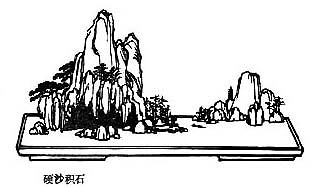Sun Tzu said: There are five ways of attacking with fire. The first is to burn soldiers in their camp;1 the second is to burn stores;2 the third is to burn baggage trains;3 the fourth is to burn arsenals and magazines;4 the fifth is to hurl dropping fire amongst the enemy.5
1. So Tu Mu. Li Ch`uan says: "Set fire to the camp, and kill the soldiers" (when they try to escape from the flames). Pan Ch`ao, sent on a diplomatic mission to the King of Shan-shan [see XI. ss. 51, note], found himself placed in extreme peril by the unexpected arrival of an envoy from the Hsiung-nu [the mortal enemies of the Chinese]. In consultation with his officers, he exclaimed: "Never venture, never win! ["Unless you enter the tiger's lair, you cannot get hold of the tiger's cubs."] The only course open to us now is to make an assault by fire on the barbarians under cover of night, when they will not be able to discern our numbers. Profiting by their panic, we shall exterminate them completely; this will cool the King's courage and cover us with glory, besides ensuring the success of our mission.' the officers all replied that it would be necessary to discuss the matter first with the Intendant. Pan Ch`ao then fell into a passion: 'It is today,' he cried, 'that our fortunes must be decided! The Intendant is only a humdrum civilian, who on hearing of our project will certainly be afraid, and everything will be brought to light. An inglorious death is no worthy fate for valiant warriors.' All then agreed to do as he wished. Accordingly, as soon as night came on, he and his little band quickly made their way to the barbarian camp. A strong gale was blowing at the time. Pan Ch`ao ordered ten of the party to take drums and hide behind the enemy's barracks, it being arranged that when they saw flames shoot up, they should begin drumming and yelling with all their might. The rest of his men, armed with bows and crossbows, he posted in ambuscade at the gate of the camp. He then set fire to the place from the windward side, whereupon a deafening noise of drums and shouting arose on the front and rear of the Hsiung-nu, who rushed out pell-mell in frantic disorder. Pan Ch`ao slew three of them with his own hand, while his companions cut off the heads of the envoy and thirty of his suite. The remainder, more than a hundred in all, perished in the flames. On the following day, Pan Ch`ao, divining his thoughts, said with uplifted hand: 'Although you did not go with us last night, I should not think, Sir, of taking sole credit for our exploit.' This satisfied Kuo Hsun, and Pan Ch`ao, having sent for Kuang, King of Shan-shan, showed him the head of the barbarian envoy. The whole kingdom was seized with fear and trembling, which Pan Ch`ao took steps to allay by issuing a public proclamation. Then, taking the king's sons as hostage, he returned to make his report to Tou Ku." HOU HAN SHU, ch. 47, ff. 1, 2.]
2. Tu Mu says: "Provisions, fuel and fodder." In order to subdue the rebellious population of Kiangnan, Kao Keng recommended Wen Ti of the Sui dynasty to make periodical raids and burn their stores of grain, a policy which in the long run proved entirely successful.
3. An example given is the destruction of Yuan Shao`s wagons and impedimenta by Ts`ao Ts`ao in 200 A.D.
4. Tu Mu says that the things contained in "arsenals" and "magazines" are the same. He specifies weapons and other implements, bullion and clothing. Cf. VII. ss. 11.
5. Tu Yu says in the T`UNG TIEN: "To drop fire into the enemy's camp. The method by which this may be done is to set the tips of arrows alight by dipping them into a brazier, and then shoot them from powerful crossbows into the enemy's lines."
Giles XII.1.

 – The Art of War
– The Art of War 
